
By W. Ruth Kozak
I had always dreamed of visiting Alexandria, the fabled city on the Nile delta established by Alexander the Great back in 332 BC. While I was researching my novel SHADOW OF THE LION, I delved into the history of this remarkable city. When I was invited to Egypt last March on a travel writer’s press trip, I told the organizers about my novel and the research I had done about the founding of the ancient city. Because of this I was given a special two-day tour of Alexandria, with an escort of three handsome Egyptian men, one of the highlights of all my travel experiences.
Alexandria is a setting in the story. Ptolemy, Alexander’s illegitimate half-brother returned to Egypt after Alexander’s death to oversee the building according to Alexander’s wishes. Ptolemy Soter became the first of the Ptolemaic dynasties of Egypt that lasted up until the era of Cleopatra.

Under Ptolemy, Alexandria became a center of Hellenism. It was the home of many Greeks and also home of the largest Jewish community in the world. It took over the trade and commerce of Tyre between Europe and the Arabian and Indian East and soon expanded until it was the largest city in the world, second only to Rome. Over the years, Alexandria was visited by Julius Caesar, Mark Antony, Nelson, Napoleon, and was home of others such as Archimedes, Euclid, Mohammed Ali Pasha and the Greek poet Cavafy.
The ancient Greek city had three regions, The Brucheum, Royal or Greek quarter which formed the most magnificent part of the city. The Jewish quarter formed the northeast and Rhakotis, occupied mainly by Egyptians. The city consisted of the island of Pharos which was joined to the mainland by a mole nearly a mile long. There stood the famous Great Lighthouse, one of the Seven Wonders of the World, 138 meters high, a project begun by the first Ptolemy and completed by his son. The lighthouse was destroyed by an earthquake in the 14th century and was replaced by an Arab fortress using some of the original bricks.
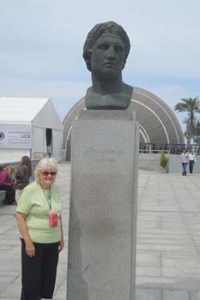 I was curious to learn how much of Alexander still exists in Alexandria, the city named for him. As the van approached the outskirts the first thing I saw was a monument of Alexander riding his horse. At our first stop we were greeted by a young tour guide, Sarah, who showed us around an extensive excavation known as Kom al-Dikka, which has revealed many Roman era ruins including a theatre. We didn’t have time to visit the catacombs which are located near Alexander’s best-known monument, ‘Pompey’s Pillar. The catacombs, known as Kom al-Soqqafa, are a multì-level labyrinth reached by a spiral staircase where there are dozens of chambers with sculpted pillars and statues, burial niches and sarcophagi.
I was curious to learn how much of Alexander still exists in Alexandria, the city named for him. As the van approached the outskirts the first thing I saw was a monument of Alexander riding his horse. At our first stop we were greeted by a young tour guide, Sarah, who showed us around an extensive excavation known as Kom al-Dikka, which has revealed many Roman era ruins including a theatre. We didn’t have time to visit the catacombs which are located near Alexander’s best-known monument, ‘Pompey’s Pillar. The catacombs, known as Kom al-Soqqafa, are a multì-level labyrinth reached by a spiral staircase where there are dozens of chambers with sculpted pillars and statues, burial niches and sarcophagi.
Our next stop on the tour was the Qaitbay Citadel, built on the site of the ancient lighthouse, and established in 1477 AD by the Sultan Qaitbay. It was one of the most important defensive strongholds on the Mediterranean coast.
Unlike Cairo which is densely packed between the Nile River and the vast expanse of Sahara desert, Alexandria sprawls out along the seacoast, a sparkling bright city surrounded by the verdant Nile Delta, the ancient’s ‘Land of Goshen’. It is the second largest city in Egypt. The city is divided into six neighbourhoods, each with a large population. Alexandria is an important industrial area and Egypt’s largest seaport with two harbors, one facing east, the other west. There is evidence of the ancient harbour on the edge of the island of Pharos, but little else remains except what the underwater archaeologists have discovered under the sea. Some of these finds can be seen in the Alexandria Museum and on display outside of the new Alexandria Library.
The Alexandria Museum contains a number of exhibits dating back to the Ptolemaic dynasty as well as Roman. What I found most interesting were some of the relics that have been brought up by the maritime archaeologists in the harbor which reveals details of the city both before Alexander’s time and during the Ptolemaic dynasty. Where is Alexander’s tomb? Most likely at the bottom of the sea. Evidently they have discovered parts of Cleopatra’s palace and in the front of the new library is a tall weather-worn statue of one of the Ptolemys brought up from the seabed.
After my tour of the Roman ruins and museum, I was taken to my hotel by the seaside, surrounded a beautiful 350 acre park of palm trees and flowering bushes, the Montazah Palace Gardens. The elegant Helnan Palestine hotel is on the grounds next to what was King Farouk’s summer palace. Farouk became king at the age of 16 and lost his throne at the age of 32 in 1952. The hotel was built in 1964 to accommodate the Arab Kings and Heads of States participating in the Second Arab Summit in Alexandria. Members of Royal families and Presidents have stayed there. This made my visit even more special to know I was on royal territory.
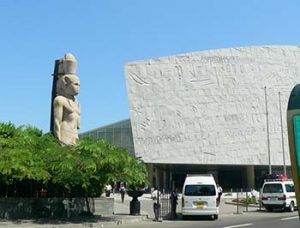 The next day was the highlight of my visit when I was taken to the New Alexandria Library, the Bibliotheca Alexandrina, which opened Oct. 16, 2002. It’s an immense cylindrical shaped modern structure separated from the University of Alexandria by a wide concourse where I posed under a bust of my hero, Alexander. The library is spectacular in its design with constant light filtering through the specially curved domes. It houses over 8 million books.
The next day was the highlight of my visit when I was taken to the New Alexandria Library, the Bibliotheca Alexandrina, which opened Oct. 16, 2002. It’s an immense cylindrical shaped modern structure separated from the University of Alexandria by a wide concourse where I posed under a bust of my hero, Alexander. The library is spectacular in its design with constant light filtering through the specially curved domes. It houses over 8 million books.
The first Library of Alexandria was created by Ptolemy I Soter in the 3rd century BC. Most of the books were papyrus scrolls on great value. It was dedicated to the Muses and functioned as a major center of scholarship. Many of the most famous thinkers of the ancient world studied here. It was in Alexandria where Euclid devised geometry and Herophilus discovered that the brain, was the seat of thought, not the heart. A wealth of works from the classical world were housed in the old library, including those of Aristotle and Plato, original manuscripts of Sophocles, Aeschylus and Euripides, Egyptian treatises on astronomy and medicine; Buddhist texts, original Hebrew scriptures and many of the works of the lyric poet Sappho.
In 48 BC when Julius Caesar laid siege to the city, a fire was set and the library was partially destroyed. Later there were other attacks until finally the library was in ruins and thousands of ancient works were destroyed. I wondered what Ptolemy would think now, if he saw this amazing work of art which has replaced the library he first created.
The new library features a museum dedicated to science and history. There is also a large planetarium at the entrance. There are all the modern amenities such as Internet Archives, several specialized libraries, academic research centres and various permanent exhibits. It is also the home of several institutions including The Arabic Society for Ethics in Science and Technology, the HCM Medical Research, the Anna Lindh Foundation for Dialogue Between Cultures and many others.
There is an international spirit in the Bibliotheca just as there was back in Ptolemy’s time. Italians and Egyptians work together preserving rare manuscripts; Greeks help with antiquities; French are in charge of the science museum and Americans are the computer experts.
The famous burning of the ancient Library of Alexandria became the symbol of the irretrievable loss of knowledge, but the new Bibliotheca Alexandria has revived that legacy and the staff works together to maintain this great Temple of Learning.
Not only was this two-day visit to Alexandria, one of the most memorable times of my visit to Egypt, but I enjoyed the company of my Egyptian travel escorts and especially the lovely young woman who was my tour guide, Sarah Ibrahim. I felt such warmth from her that we immediately bonded. She had read all about me on the internet and knew an amazing number of stories about me from my blogs. So I would certainly love to return there someday to see my new friend and visit more of this wonderful country that is so rich with history and its warm, friendly people.
IF YOU GO:
About the author:
Ruth had always dreamed of visiting Egypt, and in 2014 she was offered a press trip to that amazing country by the Canadian Egyptian Tourism. The tour included all the major sites such as Karnak, Giza and the Red Sea area and when the tour operator learned of Ruth’s novel SHADOW OF THE LION, part of which takes place in ancient Alexandria, she was offered a special trip to that amazing city. It was probably one of the most memorable trips she has ever made!
Ruth’s novel, the story of the fall of Alexander the Great’s dynasty, is available on Amazon.com in two volumes: Shadow of the Lion: Blood on the Moon and SHADOW OF THE LION: THE FIELDS OF HADES
. It is also available in full on Kindle ebook SHADOW OF THE LION. Check out Ruth’s travel blog.
Photo credits:
Alexandria at Sunset by David Evers under the Creative Commons Attribution 2.0 Generic license
Ruth Kozak at statue of Alexander by W. Ruth Kozak
Bibliotheca Alexandrina outer view by Mahmoud Saaid under Creative Commons Attribution 2.5 License


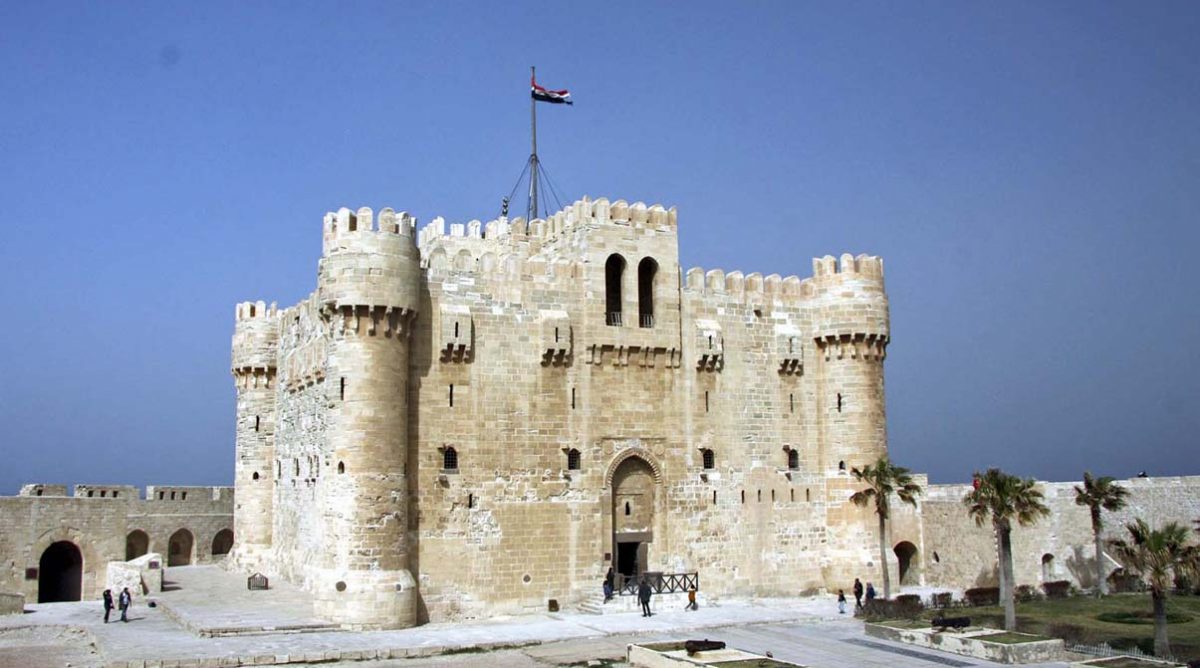
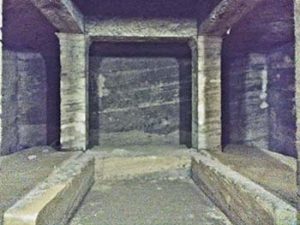
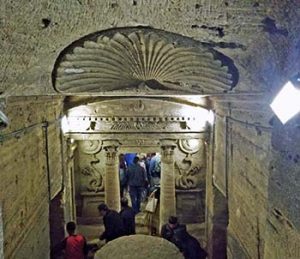
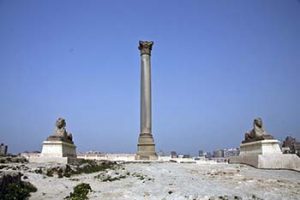
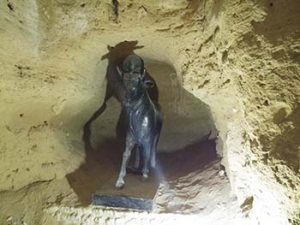



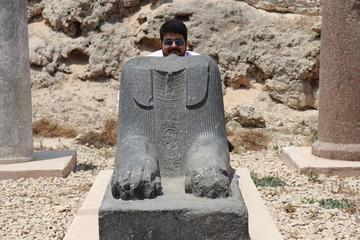


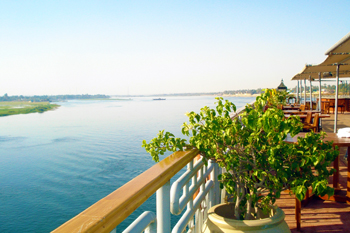 I wonder if there are crocodiles lurking in the river. I peer into the dark green water hoping to spot one. The Nile crocodile is the second largest reptile in the world, after the salt-water crocodile. They grow to up to 5 meters (16 ft) in length and weigh up to 410 kg (900 lbs). The largest on record was 61 meters (20 ft) and weighed 900 Kg (2,000 lbs). Their powerful bite and sharp conical teeth grip so firmly it is almost impossible to loosen. They are aggressive predators and will lay in wait for days waiting for the suitable moment to attack. It isn’t easy to escape. Crocodiles have been known to gallop at speeds of about 50 kilmetres (30 miles) an hour!
I wonder if there are crocodiles lurking in the river. I peer into the dark green water hoping to spot one. The Nile crocodile is the second largest reptile in the world, after the salt-water crocodile. They grow to up to 5 meters (16 ft) in length and weigh up to 410 kg (900 lbs). The largest on record was 61 meters (20 ft) and weighed 900 Kg (2,000 lbs). Their powerful bite and sharp conical teeth grip so firmly it is almost impossible to loosen. They are aggressive predators and will lay in wait for days waiting for the suitable moment to attack. It isn’t easy to escape. Crocodiles have been known to gallop at speeds of about 50 kilmetres (30 miles) an hour! Kom Ombo is a small city once situated at the crossroads between the caravan route from Nubia and the routes from the gold mines in the eastern Sahara. During the reign of Ptolemy VI (180-145 BC) it was a training depot for African war elephants. Today Kom Ombo is the home of many Nubians who were displaced after the Aswan Dam flooded their lands.
Kom Ombo is a small city once situated at the crossroads between the caravan route from Nubia and the routes from the gold mines in the eastern Sahara. During the reign of Ptolemy VI (180-145 BC) it was a training depot for African war elephants. Today Kom Ombo is the home of many Nubians who were displaced after the Aswan Dam flooded their lands.
 Finally, we enter a large room that, to my surprise, is full of crocodiles! Mummified crocodiles! It is evident from the large number displayed here that the crocodile was held in honor by the people of Kom Ombo. The museum contains crocodile eggs as well as mummified baby and adult crocodiles. Some of the mummies were found with babies in their mouths or on their backs. These ferocious beasts are known to care diligently for their young, often carrying them on their backs. By preserving them by mummification it emphasized the protective and nurturing aspects of Sobek as he protected the Egyptian people just as the crocodile protects its young.
Finally, we enter a large room that, to my surprise, is full of crocodiles! Mummified crocodiles! It is evident from the large number displayed here that the crocodile was held in honor by the people of Kom Ombo. The museum contains crocodile eggs as well as mummified baby and adult crocodiles. Some of the mummies were found with babies in their mouths or on their backs. These ferocious beasts are known to care diligently for their young, often carrying them on their backs. By preserving them by mummification it emphasized the protective and nurturing aspects of Sobek as he protected the Egyptian people just as the crocodile protects its young.
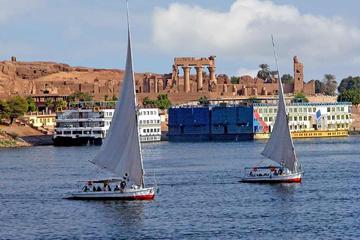

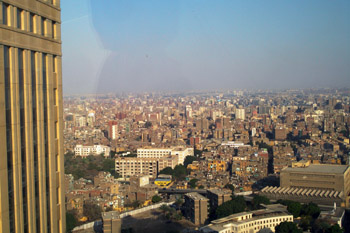 The first thing I noticed as we drove in Cairo from the airport, were the miles and miles of densely built apartment blocks, many of them half-finished stretching out from the Nile as far as you could see. Laundry fluttered from some of the balcony but there were just as many that appeared empty. The Egyptologist with our group of Canadian travel writers explained that this was part of the reasons for the first revolution – the overbuilding on green space, a corruption.
The first thing I noticed as we drove in Cairo from the airport, were the miles and miles of densely built apartment blocks, many of them half-finished stretching out from the Nile as far as you could see. Laundry fluttered from some of the balcony but there were just as many that appeared empty. The Egyptologist with our group of Canadian travel writers explained that this was part of the reasons for the first revolution – the overbuilding on green space, a corruption.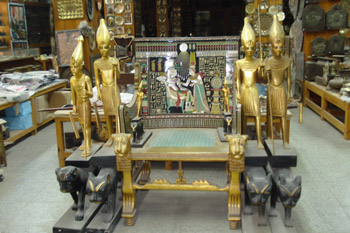 As a female solo traveler, I would not want to venture alone to Cairo, although I’d certainly not hesitate to return to this marvelous country in the company of a tour group. Did I feel any danger in Cairo? In spite of the two revolutions and the pending elections at the time I was there, and the spate of unfavorable media coverage about Egypt, travel warnings from embassies, that has diminished their tourism by 90%, I felt no sense of danger. In fact, there was good security in place everywhere. And what impressed me so much was the people. I have never met such gracious, generous, friendly people anywhere before. Young, old, men, women and children approached me and my travel companions on the street with smiles. “Welcome! Where are you from? Welcome to Egypt!” These are proud people, open and friendly, who walk with a noble stance, proud of their country and heritage and greet you with welcoming smiles.
As a female solo traveler, I would not want to venture alone to Cairo, although I’d certainly not hesitate to return to this marvelous country in the company of a tour group. Did I feel any danger in Cairo? In spite of the two revolutions and the pending elections at the time I was there, and the spate of unfavorable media coverage about Egypt, travel warnings from embassies, that has diminished their tourism by 90%, I felt no sense of danger. In fact, there was good security in place everywhere. And what impressed me so much was the people. I have never met such gracious, generous, friendly people anywhere before. Young, old, men, women and children approached me and my travel companions on the street with smiles. “Welcome! Where are you from? Welcome to Egypt!” These are proud people, open and friendly, who walk with a noble stance, proud of their country and heritage and greet you with welcoming smiles. One of the main interest for me was the Egyptian Museum located right near Tahrir Square. The museum contains the world’s most extensive collection of pharanoiac antiquities. I saw the King Tut exhibit when it was in Seattle but those treasures were insignificant compared to what you will see on display here: magnificent golden chariots, precious jewelry, and countless other incredible treasures as well as coffins, mummies and other artifacts from prehistoric through the Roman periods The museum houses approximately 160,00 objects in total. I was told they plan to build a new museum so that more of the treasures can be displayed.
One of the main interest for me was the Egyptian Museum located right near Tahrir Square. The museum contains the world’s most extensive collection of pharanoiac antiquities. I saw the King Tut exhibit when it was in Seattle but those treasures were insignificant compared to what you will see on display here: magnificent golden chariots, precious jewelry, and countless other incredible treasures as well as coffins, mummies and other artifacts from prehistoric through the Roman periods The museum houses approximately 160,00 objects in total. I was told they plan to build a new museum so that more of the treasures can be displayed.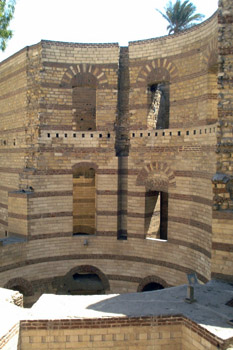 In Old Cairo we visited several churches including the oldest Greek Orthodox Church and the Ben Ezra Synagogue which dates from the 9th century and is the oldest Jewish place of worship in Egypt. We also visited the 4th century Hanging Church which is built on the bastions of the ancient Roman wall and ‘suspended’ above the level of the Nile. In one of the oldest Coptic churches in Egypt we entered the crypt-like area below where there is a small room that is supposed to have been where Mary and Joseph and the baby Jesus found shelter when they fled to Egypt. Old Cairo also had an excellent bazaar for buying souvenirs, some very expensive and others modestly priced including furniture and jewelry.
In Old Cairo we visited several churches including the oldest Greek Orthodox Church and the Ben Ezra Synagogue which dates from the 9th century and is the oldest Jewish place of worship in Egypt. We also visited the 4th century Hanging Church which is built on the bastions of the ancient Roman wall and ‘suspended’ above the level of the Nile. In one of the oldest Coptic churches in Egypt we entered the crypt-like area below where there is a small room that is supposed to have been where Mary and Joseph and the baby Jesus found shelter when they fled to Egypt. Old Cairo also had an excellent bazaar for buying souvenirs, some very expensive and others modestly priced including furniture and jewelry.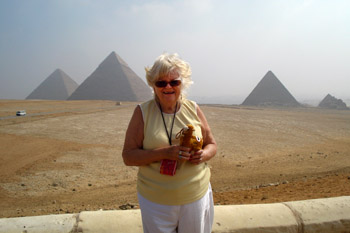 Giza is located to the west of Central Cairo not far from the ancient cities of Memphis and Saqqara. The pyramids include the great pyramid built for the pharaoh Cheops in the 4th dynasty and the slightly smaller Pyramid of Chephren date from around 2500 BC. There are also the Pyramid of Mykerinos and some smaller pyramids built for the kings’ families, The Great Pyramid of Cheops immortalizes the son of Snerferu and Hetpheres. This pyramid is the largest of the three, comprised of 2.3 million stone blocks each weighing an average of 2.5 tons. How on earth did they move these stones to build a monument so high as this? This is definitely one of the ‘wonders’ of the world! In fact, the pyramids of Giza are the last remaining Seven Wonders of the World.
Giza is located to the west of Central Cairo not far from the ancient cities of Memphis and Saqqara. The pyramids include the great pyramid built for the pharaoh Cheops in the 4th dynasty and the slightly smaller Pyramid of Chephren date from around 2500 BC. There are also the Pyramid of Mykerinos and some smaller pyramids built for the kings’ families, The Great Pyramid of Cheops immortalizes the son of Snerferu and Hetpheres. This pyramid is the largest of the three, comprised of 2.3 million stone blocks each weighing an average of 2.5 tons. How on earth did they move these stones to build a monument so high as this? This is definitely one of the ‘wonders’ of the world! In fact, the pyramids of Giza are the last remaining Seven Wonders of the World. Most of the remnants of ancient Egypt lay scattered on the desert plateau south of Cairo. After visiting the amazing pyramids of Giza we went to see the amazing necropolis at Saqqara and the Step Pyramid of King Djoser. This is the largest necropolis in Egypt, extending for almost five miles. It’s a collection of pyramids, temples and tombs including the Mastaba tombs where the high officials of the Pharaohs were buried.
Most of the remnants of ancient Egypt lay scattered on the desert plateau south of Cairo. After visiting the amazing pyramids of Giza we went to see the amazing necropolis at Saqqara and the Step Pyramid of King Djoser. This is the largest necropolis in Egypt, extending for almost five miles. It’s a collection of pyramids, temples and tombs including the Mastaba tombs where the high officials of the Pharaohs were buried. Farther south, is the ancient royal capital of the pharaohs, Memphis. According to legend it was founded by pharaoh Menes around 3000 BC and was the capital of Egypt during the Old Kingdom, remaining an important city throughout history. During the 6th dynasty it was a centre for the worship of Ptah, the god of creation and artworks. There is an alabaster Sphinx guarding the Temple of Ptah that is a memorial of the city’s former power and prestige.
Farther south, is the ancient royal capital of the pharaohs, Memphis. According to legend it was founded by pharaoh Menes around 3000 BC and was the capital of Egypt during the Old Kingdom, remaining an important city throughout history. During the 6th dynasty it was a centre for the worship of Ptah, the god of creation and artworks. There is an alabaster Sphinx guarding the Temple of Ptah that is a memorial of the city’s former power and prestige.
 Unfortunately we have no time to bargain and buy souvenirs this morning. We’re on our way to board a boat that will take us to visit the island temple of Philae. Hanan, the Egyptologist explains, “These dark-skinned people are Nubians. They live in settlements along the river.” She tells us that because of the lack of tourists due to recent political unrest, these souvenir hawkers and boatmen are struggling to make a living. Hanan points out a settlement of yellow brick houses clustered under a sandy hill across the river. “That is one of their villages. They call it ‘Elephantine’, perhaps because the hill is shaped like an elephant.”
Unfortunately we have no time to bargain and buy souvenirs this morning. We’re on our way to board a boat that will take us to visit the island temple of Philae. Hanan, the Egyptologist explains, “These dark-skinned people are Nubians. They live in settlements along the river.” She tells us that because of the lack of tourists due to recent political unrest, these souvenir hawkers and boatmen are struggling to make a living. Hanan points out a settlement of yellow brick houses clustered under a sandy hill across the river. “That is one of their villages. They call it ‘Elephantine’, perhaps because the hill is shaped like an elephant.” With our handsome young Nubian boatman at the helm we sail down the river. These boatmen are renowned for their skill as skippers and fishermen. Most of the small craft including the feluccas that sail on the Nile are commandeered by Nubians. The Nile is a vast river, much wider than I’d expected, and fast flowing.
With our handsome young Nubian boatman at the helm we sail down the river. These boatmen are renowned for their skill as skippers and fishermen. Most of the small craft including the feluccas that sail on the Nile are commandeered by Nubians. The Nile is a vast river, much wider than I’d expected, and fast flowing. Nubia was always a land of mystery and legend. Many of the pharaohs of ancient times were Nubians. At the site of Memphis and Karnak there are Nubian monuments. In 747 BC the city of Thebes, near Karnak, was besieged and the Egyptians called on the Nubian king for protection. Thebes was rescued and for the next 100 years Nubian kings ruled in Egypt. Archaeologists have worked to excavate as many ancient sites as possible and managed to save over 5000 Nubian objects but many of the Nubian treasures still lie beneath the waters of Lake Nasser. One of the archaeological sites that was rescued and restored is Abu Simbal, at the far end of Lake Nasser. Another is the Temple of Philae, restored on a small rocky island once known as Apo, which means “ivory”.
Nubia was always a land of mystery and legend. Many of the pharaohs of ancient times were Nubians. At the site of Memphis and Karnak there are Nubian monuments. In 747 BC the city of Thebes, near Karnak, was besieged and the Egyptians called on the Nubian king for protection. Thebes was rescued and for the next 100 years Nubian kings ruled in Egypt. Archaeologists have worked to excavate as many ancient sites as possible and managed to save over 5000 Nubian objects but many of the Nubian treasures still lie beneath the waters of Lake Nasser. One of the archaeological sites that was rescued and restored is Abu Simbal, at the far end of Lake Nasser. Another is the Temple of Philae, restored on a small rocky island once known as Apo, which means “ivory”. The boat rounds a bend in the river past a mound of giant stones that stand like a sentinel. Not far ahead I see the sand-stone buildings of the Temple of Philae fringed by a stand of palm trees.
The boat rounds a bend in the river past a mound of giant stones that stand like a sentinel. Not far ahead I see the sand-stone buildings of the Temple of Philae fringed by a stand of palm trees.
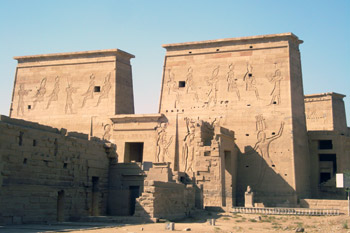 The temple complex was built during the Ptolemaic dynasty (380-362 BC). Its principal deity was Isis but there are shrines dedicated to other gods. The most ancient temple was one built for Isis, the goddess to whom the first buildings were dedicated. It was approached from the river through a double colonnade. Because it was supposed to be the burial place of Isis’s husband, Osiris, Philae was held in great reverence both by the Egyptians to the north and the Nubians in the south. Only priests could dwell there. On the walls inscriptions tell the story of Osiris and how he was murdered.
The temple complex was built during the Ptolemaic dynasty (380-362 BC). Its principal deity was Isis but there are shrines dedicated to other gods. The most ancient temple was one built for Isis, the goddess to whom the first buildings were dedicated. It was approached from the river through a double colonnade. Because it was supposed to be the burial place of Isis’s husband, Osiris, Philae was held in great reverence both by the Egyptians to the north and the Nubians in the south. Only priests could dwell there. On the walls inscriptions tell the story of Osiris and how he was murdered.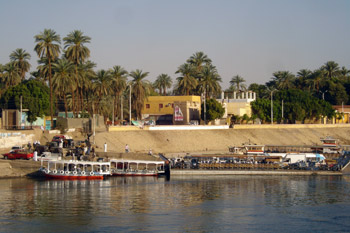 The Philae temple was closed in the 6thcentury AD by the Byzantine emperor Justinian. After that it became a seat of the Christian religion. Ruins of a Christian church were discovered on the site. Many of the sculptures and hieroglyphics on the walls of the temple were destroyed or mutilated by these early Christian inhabitants. Most of Horus’s statues were left unmarred but in many of the wall scenes, every figure is scratched out except that of Horus and his winged solar-disk, perhaps because the Byzantine Christians saw some parallel between Horus, the god’s son, and the stories of Jesus.
The Philae temple was closed in the 6thcentury AD by the Byzantine emperor Justinian. After that it became a seat of the Christian religion. Ruins of a Christian church were discovered on the site. Many of the sculptures and hieroglyphics on the walls of the temple were destroyed or mutilated by these early Christian inhabitants. Most of Horus’s statues were left unmarred but in many of the wall scenes, every figure is scratched out except that of Horus and his winged solar-disk, perhaps because the Byzantine Christians saw some parallel between Horus, the god’s son, and the stories of Jesus.


